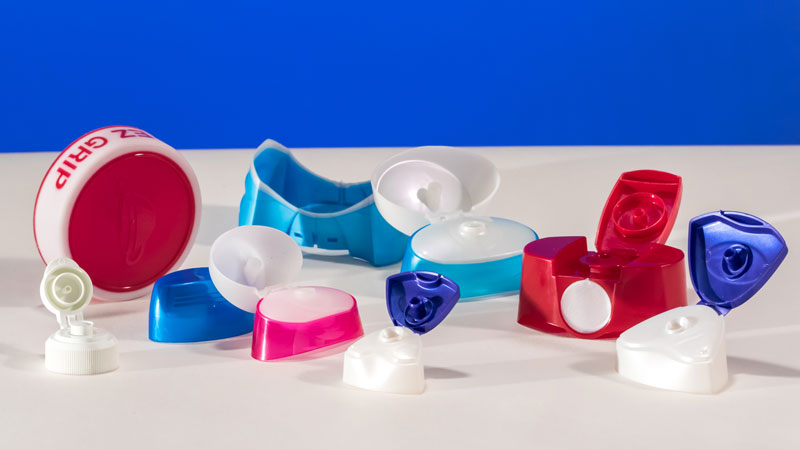by Casey Gwozdz, president
Ultra Polishing

Polishing starts where machining ends, and it can sometimes be the forgotten step. Mold polishing is typically the last process in tooling production before the completed project is sent to the customer. The polish often is what sells the tool – it makes the tool look good and highlights the detailed work. But, it requires a steady hand and in-depth skill to preserve the shapes and tight tolerances required for production. Small mistakes can cost time and money.
Whether sending a mold for outside service or turning it over to in-house tool shop employees, certain steps should be taken to get the best results. Remember – when a mold arrives for polishing, it’s often the first time the polisher has seen it. These 16 steps can ensure a successful polish.
- Identify all the shutoffs. Use a marker and shade in the shutoffs very clearly.
- What corners and edges need to remain sharp? Again, mark them clearly.
- Are there corners that need radii added prior to mold polishing?
- Indicate just what areas will be textured. What kind of texture will be applied? How deep will the finished texture be? (i.e., 0.0006″ or 0.0012″ deep, etc.) The depth and kind of texture will determine the level of mold polish required. Knowing these specific details ahead of time can save a shop time and money.
- Just what kind of steel is the detail of the plastic injection mold being polished made of? Trade name of the steel? Hardness?
- Should the vent runners be polished? Are the vents to be lapped and polished? Was stock left for this to be done?
- Are the shutoffs finished and all fitting completed? Should certain areas and details be masked (taped) for extra protection?
- What kind of surface finish is needed? Many of today’s engineered plastics will release more easily (or grip more readily) if the plastic injection molds are polished to a specific finish. This is especially true in ribs and on non-draft walls.
- Just how was the piece machined? Was it finished in the CNC machine with a carbide cutter after heat-treating? The insert or block may need to be stress relieved if a truly high level of diamond polish is to be achieved. Carbiding can result in a surface-hardened condition. This can cause problems for the mold polisher. If the surface is to be textured, the polisher will need to acid test the surface to check that a consistent surface has been achieved. This is especially true of an EDM’d surface.
- Pre-plan the polishing of the various inserts of the injection mold. What parts of the mold need to be polished first? Certain parts may have additional work scheduled to be completed after polishing. For example, to guarantee a sharp corner, stock may be left intentionally to protect an edge from being accidentally rolled. In the case of large, complex molds, the side of the mold with the most assembly time can be polished first to save time.
- Caution! Was this molding detail initially polished in the shop by a well-intentioned mold maker to, let’s say, a 320 stone finish? The polisher may have to go back and re-polish what that person has overlooked. The 320 stone finish will hide a multitude of polishing mistakes that only will become evident after the polisher starts to apply a finer finish. The polisher may have to go back to a 220 stone to blend in the mistakes! Polishing is a profession that must be learned and practiced to achieve the desired results in the shortest time possible. Polishing is not “rubbing on the surface with a box of rocks.” It is a carefully orchestrated series of carefully applied skills that result in a polished surface … not to be attempted by unskilled or inexperienced hands!
- Contacting the polisher at the beginning of a larger, complex mold can save time and money. Remember that a polishing company works on and sees at least 10 times as many molds per year as an average shop. The polisher can make very helpful recommendations to reduce polishing time and the amount of time a mold is away from the shop.
- Itemize all parts and/or inserts that are sent to the polisher. Things can get lost.
- Make sure all orders and information are in writing, not verbal.
- Drop off polishing on time, and pick it up promptly when it is completed.
- Make sure the cavities, cores and components being polished are blown out and cleaned before they are taken to the polisher. No one wants to receive dirty work.
In business since 1979, Ultra Polishing, located in Schaumburg, Illinois, can work from prints, models and piece parts to perform precision injection mold benching and polishing. The company operates around the clock, six days a week, offering fast response and flexibility with nationwide pickup and delivery of plastic injection molds and die cast dies up to 60,000lbs. For more information, call 847.352.5249 or visit www.ultrapolishing.com.


